
Campbelltown is a suburb located on the outskirts of the metropolitan area of Sydney, New South Wales, Australia. It is located in Greater Western Sydney 53 kilometres (33 mi) south-west of the Sydney central business district by road. Campbelltown is the administrative seat of the local government area of the City of Campbelltown. It is also acknowledged on the register of the Geographical Names Board of New South Wales as one of only four cities within the Sydney metropolitan area.
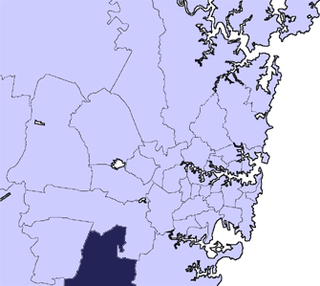
The City of Campbelltown is a local government area in the Macarthur region of south-western Sydney, in New South Wales, Australia. The area is located about 55 kilometres (34 mi) south west of the Sydney central business district and comprises 312 square kilometres (120 sq mi).

St Helens Park is a suburb of Sydney, in the state of New South Wales, Australia 56 kilometres south-west of the Sydney central business district, in the local government area of the City of Campbelltown. it is part of the Macarthur region.
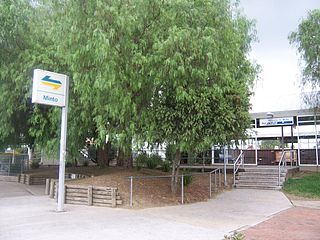
Minto is a suburb of Sydney, in the state of New South Wales, Australia. Minto is located 50 kilometres south-west of the Sydney central business district, in the local government area of the City of Campbelltown and is part of the Macarthur region.

Macarthur is a region in the south-west part of the Greater Sydney area, in the state of New South Wales, Australia. The region includes the local government areas of the City of Campbelltown, Camden Council, and Wollondilly Shire. It covers an area of 3,067 square kilometres and has a population of close to 310,000 residents. The region geographically forms the foothills between the Blue Mountains and Southern Highlands regions.

Appin is a town on the south-west fringe of Sydney in the Macarthur Region in Tharawal country near its boundary with Gandangara country, New South Wales, Australia in Wollondilly Shire. It is situated about 16 kilometres (9.9 mi) south of Campbelltown and 35 kilometres (22 mi) northwest of Wollongong.

Elizabeth Macquarie was the second wife of Lachlan Macquarie, who served as Governor of New South Wales from 1810 to 1821. She played a significant role in the establishment of the colony and is recognised in the naming of many Australian landmarks including Mrs Macquarie's Chair and Elizabeth Street, Hobart. Governor Macquarie named the town of Campbelltown, New South Wales after his wife's maiden name and a statue of her now stands in Mawson Park, Campbelltown.

The Bank of New South Wales is a heritage-listed former bank at 242 Mary Street, Gympie, Gympie Region, Queensland, Australia. It was designed by Richard Gailey and built from 1890 to 1891 by T. Kelly. It is also known as Widgee Shire Council Chambers, Coolooa Shire Council Chambers and Gympie Regional Council Chambers. It was added to the Queensland Heritage Register on 15 April 2011.
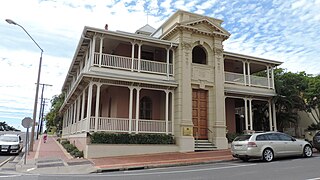
Kullaroo House is a heritage-listed former bank building at 40 Goondoon Street, Gladstone, Gladstone Region, Queensland, Australia. It was designed by James Percy Owen Cowlishaw and built from 1910 to 1911 by A A Carrick. It is also known as Commercial Banking Company of Sydney Ltd. It was added to the Queensland Heritage Register on 5 March 1999.
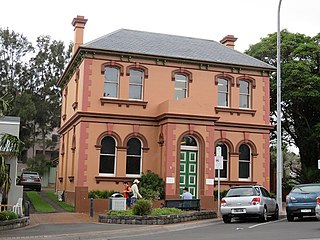
CBC Bank is a heritage-listed former bank building at 16–20 Manning Street, Kiama, in the Illawarra region of New South Wales, Australia. It was designed by Mansfield Bros and built by White and Coghill in 1880. It was added to the New South Wales State Heritage Register on 2 April 1999.
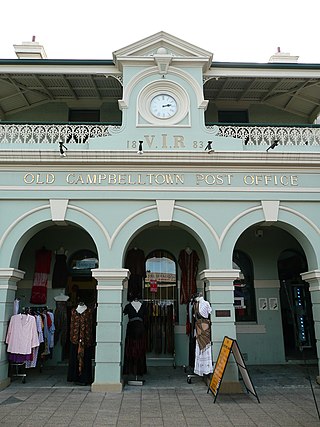
The Campbelltown Post Office is a heritage-listed former post office and now shops and office space at 261 Queen Street, Campbelltown, New South Wales, a suburb of Sydney, Australia. It was designed by James Barnet and built in 1881. It is also known as Campbelltown Post Office (former). The property is privately owned. It was added to the New South Wales State Heritage Register on 2 April 1999.

Dredges Cottage is a heritage-listed former cottage and now office located at 303 Queen Street, Campbelltown in the City of Campbelltown local government area of New South Wales, Australia. The property is owned by Campbelltown City Council. It was added to the New South Wales State Heritage Register on 2 April 1999.

Robin Hood Farm is a heritage-listed former dairy farm homestead and now adolescent drug rehabilitation centre located at 196 Campbelltown Road, Ingleburn, in the City of Campbelltown local government area of New South Wales, Australia. It was built from 1860 to 1862 by Richard Watson. It is also known as Robin Hood Inn and Waratah Dairies. The property is owned by Department of Planning and Infrastructure, a department of the Government of New South Wales. It was added to the New South Wales State Heritage Register on 2 April 1999.

Warbys Barn and Stables is a heritage-listed former barns and now commercial building at 14 - 20 Queen Street, Campbelltown in the City of Campbelltown local government area of New South Wales, Australia. It was designed by John Warby and built in 1816. It is also known as Warbys Barn and Warbys Stables, The Leumeah Barn, Leumeah Barn Restaurant and Campbelltown Motor Inn. It was added to the New South Wales State Heritage Register on 2 April 1999.

Queen Street Buildings are a group of heritage-listed former shops and hotel at 284 - 298 Queen Street, Campbelltown in the City of Campbelltown local government area of New South Wales, Australia: built by John Doyle (hotel), William Bursill and Cobb and Bocking. It is also known as Queen Street Buildings Group, McGuanne House, Old Railway Hotel, William Bursill's Shop and The Coach House. The property is owned by Minister For Administering The Environmental & Planning Act, 1979. It was added to the New South Wales State Heritage Register on 2 April 1999.
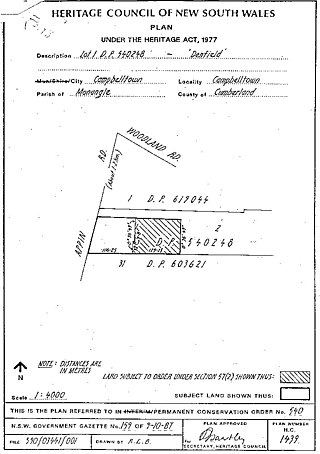
Denfield is a heritage-listed former farm homestead complex, residence, inn and farm and now residence located at Appin Road, St Helens Park in the City of Campbelltown local government area of New South Wales, Australia. It was built in 1837 by John Farley. It was added to the New South Wales State Heritage Register on 2 April 1999.

Glenlee is a heritage-listed former dairy farm, pastoral property and hay production and now olive farm, private home and pastoral property at Glenlee Road, Menangle Park, City of Campbelltown, New South Wales, Australia. It was designed by Henry Kitchen and built from 1824 to 1859 by Robert Gooch and Nathaniel Payton. It is also known as Glenlee, outbuildings, garden & gatelodge. It was added to the New South Wales State Heritage Register on 2 April 1999.
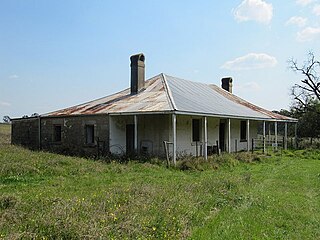
Beulah is a heritage-listed farm at 767 Appin Road, Gilead, New South Wales, an outer suburb of Sydney, Australia in the Macarthur region. It was built from 1835 to 1846 by Cornelius O'Brien, Duncan Cameron, John Kennedy Hume, Ellen Hume; Mansfield Brothers. It is also known as Summer Hill; Summer Hill Estate. The property is privately owned. It was added to the New South Wales State Heritage Register on 2 April 1999.

The Young Street Terraces are heritage-listed former government offices and nurses' quarters, and now offices, at 36-42 Young Street, in the Sydney central business district in New South Wales, Australia. Its design and construction was attributed to Joseph Paul Walker and built from 1874 to 1875. It is also known as the Sydney Hospital Nurses Annex; Nurses quarters; or Government Offices. It was added to the New South Wales State Heritage Register on 2 April 1999.
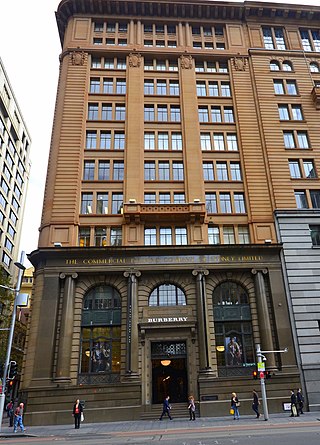
343 George Street, Sydney is a heritage-listed former bank building and now nine-storey retail and commercial premises. It is located at 343 George Street in the Sydney central business district, in the City of Sydney local government area of New South Wales, Australia.





















